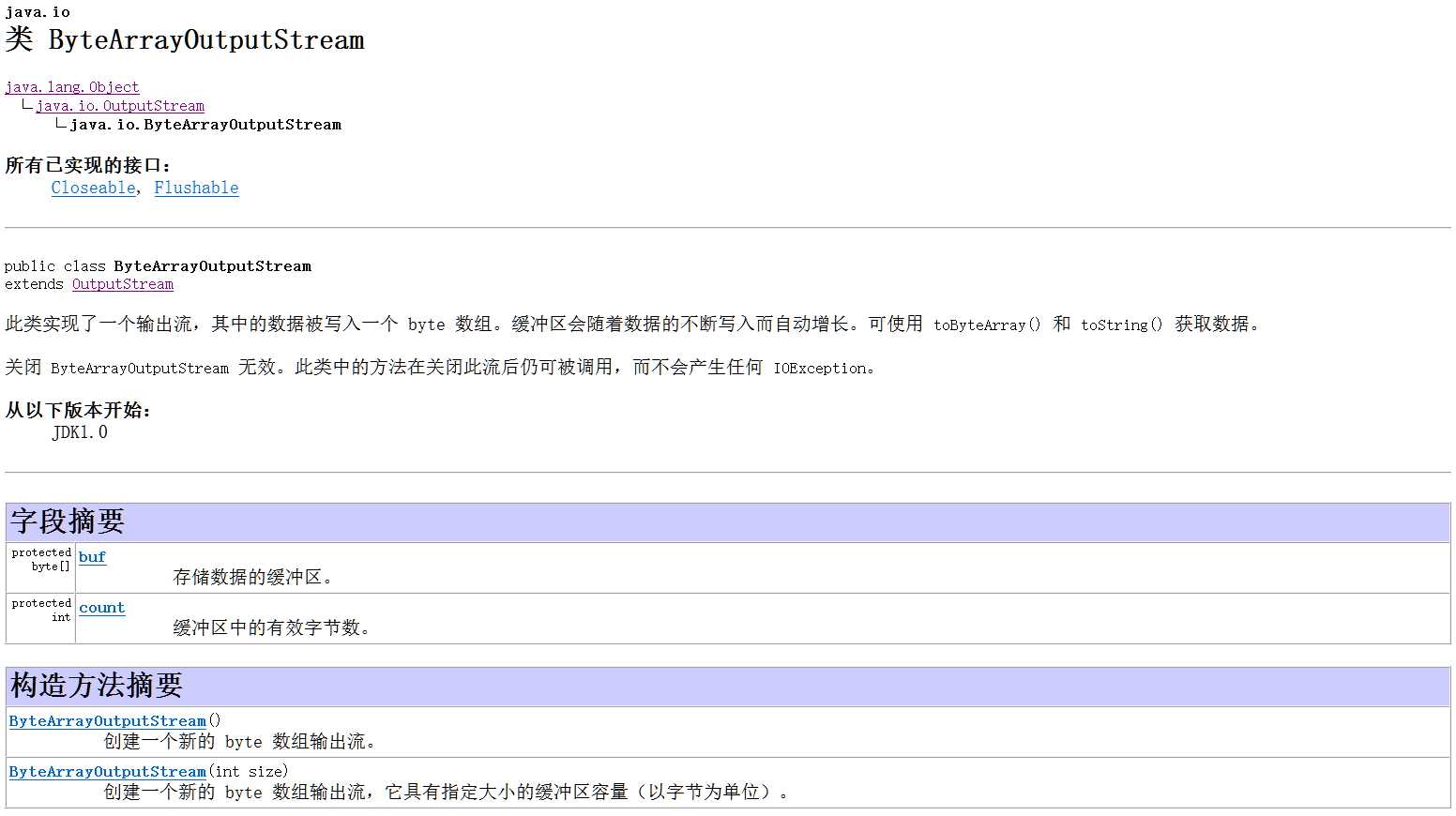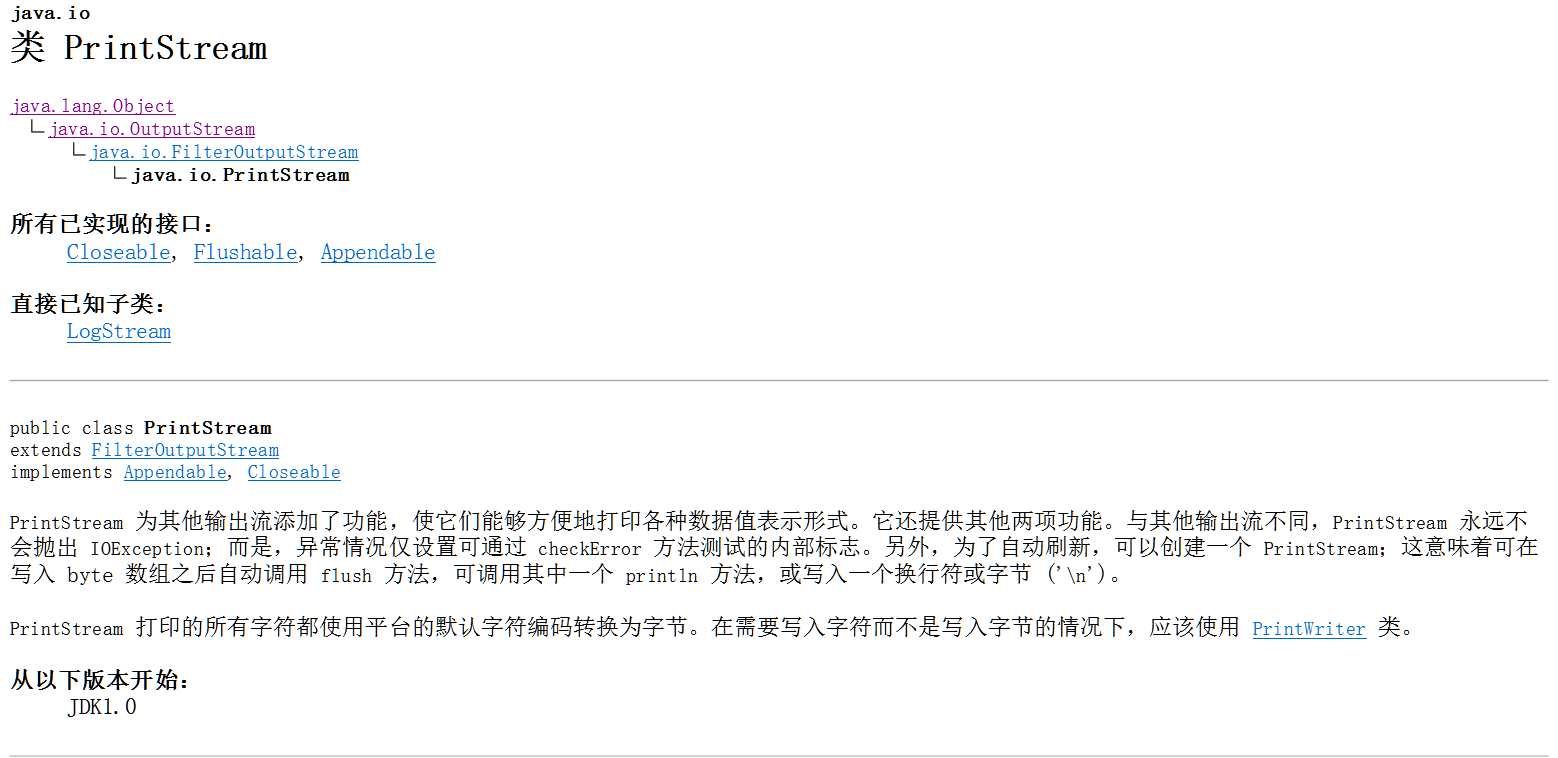标签:final 而且 pack zab 文件 有关 event bytearray 数据类型
* A:什么是序列流
* 序列流可以把多个字节输入流整合成一个,从序列流中读取数据时,将从被整合的第一个流开始,读完后再读下一个
* B:使用方式
* 整合两个:SequenceInputStream(InputStream, InputStream)
* 整合多个:SequenceInputStream(Enumeration)


package com.heima.otherio; import java.io.FileInputStream; import java.io.FileNotFoundException; import java.io.FileOutputStream; import java.io.IOException; import java.io.SequenceInputStream; import java.util.Enumeration; import java.util.Vector; public class Demo1_SequenceInputStream { public static void main(String[] args) throws IOException { // demo1(); // 不用序列流的方法 // demo2(); // 整合两个输入流 // demo3(); // 整合多个输入流 } public static void demo3() throws FileNotFoundException, IOException { FileInputStream fis1 = new FileInputStream("a.txt"); // 创建字节输入流 FileInputStream fis2 = new FileInputStream("b.txt"); FileInputStream fis3 = new FileInputStream("c.txt"); Vector<FileInputStream> v = new Vector<FileInputStream>(); // 创建泛型为字节输入流的集合对象 v.add(fis1); // 将流对象添加到集合内 v.add(fis2); v.add(fis3); Enumeration<FileInputStream> e = v.elements(); // 根据Vector集合,创建泛型为字节输入流的枚举对象 SequenceInputStream sis = new SequenceInputStream(e); // 将枚举中的输入流整合成一个 FileOutputStream fos = new FileOutputStream("d.txt"); // 创建字节输出流 int c; while ((c = sis.read()) != -1) { // 从序列流中读取数据 fos.write(c); } sis.close(); // 关闭序列流 fos.close(); } public static void demo2() throws FileNotFoundException, IOException { FileInputStream fis1 = new FileInputStream("a.txt"); // 创建字节输入流1 FileInputStream fis2 = new FileInputStream("b.txt"); // 创建字节输入流2 SequenceInputStream sis = new SequenceInputStream(fis1, fis2); // 基于两个字节输入流,创建序列流 FileOutputStream fos = new FileOutputStream("c.txt"); // 创建字节输出流 int b; while ((b = sis.read()) != -1) { // 从序列流读取数据 fos.write(b); } sis.close(); // sis在关闭的时候会将构造方法中的流对象也都关闭 fos.close(); } public static void demo1() throws FileNotFoundException, IOException { FileInputStream fis1 = new FileInputStream("a.txt"); // 创建字节输入流,关联a.txt FileOutputStream fos = new FileOutputStream("c.txt"); // 创建字节输出流,关联b.txt int c; while ((c = fis1.read()) != -1) { // 不断地在a.txt上读取字节 fos.write(c); // 将读到的字节写到c.txt上 } fis1.close(); // 关闭字节输入流1 FileInputStream fis2 = new FileInputStream("b.txt"); // 创建字节输入流,关联c.txt while ((c = fis2.read()) != -1) { // 不断地在b.txt上读取字节 fos.write(c); // 将读到的字节写到c.txt上 } fis2.close(); // 关闭字节输入流2 fos.close(); // 关闭字节输出流 } }
* A:什么是内存输出流
* 该输出流可以向内存中写数据,把内存当作一个缓冲区,写出之后可以一次性获取所有数据
* B:使用方法
* 创建对象:new ByteArrayOutputStream()
* 写出数据:write(int), write(byte[ ] )
* 获取数据:toByteArray()


package com.heima.otherio; import java.io.ByteArrayOutputStream; import java.io.FileInputStream; import java.io.FileNotFoundException; import java.io.IOException; public class Demo2_ByteArrayOutputStream { public static void main(String[] args) throws IOException { // demo1(); // demo2(); } public static void demo2() throws FileNotFoundException, IOException { FileInputStream fis = new FileInputStream("e.txt"); ByteArrayOutputStream baos = new ByteArrayOutputStream(); // 在内存中创建了可以增长的内存数组 int b; while ((b = fis.read()) != -1) { baos.write(b); // 将读取到的数据逐个写到内存中 } byte[] arr = baos.toByteArray(); // 将缓冲区的数据全部或取出来,并赋值给arr数组 System.out.println(new String(arr)); System.out.println(baos.toString()); // 将缓冲区中的内容转换为字符串,使用平台默认的码表转换 fis.close(); // baos.close(); // 内存流不需要关,没有关的意义 } public static void demo1() throws FileNotFoundException, IOException { FileInputStream fis = new FileInputStream("e.txt"); byte[] arr = new byte[4]; int len; while ((len = fis.read(arr)) != -1) { System.out.println(new String(arr, 0, len)); } fis.close(); } }
* 定义一个文件输入流,调用read(byte[ ] b)方法,将 a.txt文件中的内容打印出来(byte数组大小限制为5)

package com.heima.test; import java.io.ByteArrayOutputStream; import java.io.FileInputStream; import java.io.IOException; public class Test1 { /* * 分析: * 1、read(byte[] b)是字节输入流的方法,因此需要创建FileInputStream,关联a.txt * 2、创建字节数组,长度为5 * 3、创建内存输出流,将读到的数组写到内存输出流中 * 4、将内存输出流的数据全部转换为字符串打印 * 5、关闭输入流 */ public static void main(String[] args) throws IOException { FileInputStream fis = new FileInputStream("a.txt"); // 创建字节输入流,关联a.txt ByteArrayOutputStream baos = new ByteArrayOutputStream(); // 创建内存流 byte[] arr = new byte[5]; int len; while ((len = fis.read(arr)) != -1) { // 通过长度为5的数组读取数据 baos.write(arr, 0, len); // 将数据写入内存中 } System.out.println(baos); // 将内存中的内容以字符串的形式打印 fis.close(); // 关闭字节流 } }
* A:什么是对象操作流
* 该流可以将一个对象写出,或者读取一个对象到程序中,也就是执行了序列化和反序列化的操作
* 对象需要实现序列化接口,可以可选择的重写ID号,类似于软件的版本号
* B:使用方法
* 写出:new ObjectOutputStream(OutputStream), writeObject()


package com.heima.bean; import java.io.Serializable; public class Person implements Serializable{ /** * 对象必须实现 可序列化接口 */ private static final long serialVersionUID = 2L; private String name; private int age; private String gender; public Person() { super(); } public Person(String name, int age) { super(); this.name = name; this.age = age; } public String getName() { return name; } public void setName(String name) { this.name = name; } public int getAge() { return age; } public void setAge(int age) { this.age = age; } @Override public String toString() { return "Person [name=" + name + ", age=" + age + "]"; } }

package com.heima.otherio; import java.io.FileNotFoundException; import java.io.FileOutputStream; import java.io.IOException; import java.io.ObjectOutputStream; import java.util.ArrayList; import com.heima.bean.Person; public class Demo3_ObjectOutputStream { public static void main(String[] args) throws IOException, IOException { // demo1(); // demo2(); } public static void demo2() throws IOException, FileNotFoundException { Person p1 = new Person("张三", 23); Person p2 = new Person("李四", 24); Person p3 = new Person("王五", 25); Person p4 = new Person("赵六", 26); ArrayList<Person> list = new ArrayList<Person>(); list.add(p1); list.add(p2); list.add(p3); list.add(p4); ObjectOutputStream oos = new ObjectOutputStream(new FileOutputStream("e.txt")); oos.writeObject(list); // 把整个集合对象一次写出 oos.close(); } public static void demo1() throws IOException, FileNotFoundException { Person p1 = new Person("张三",23); // 对象必须可序列化 Person p2 = new Person("李四",24); // FileOutputStream fos = new FileOutputStream("f.txt"); ObjectOutputStream oos = new ObjectOutputStream(new FileOutputStream("f.txt")); // 创建对象输出流 oos.writeObject(p1); oos.writeObject(p2); oos.close(); } }
* 读取:new ObjectInputStream(InputStream), readObject()

package com.heima.otherio; import java.io.FileInputStream; import java.io.FileNotFoundException; import java.io.FileOutputStream; import java.io.IOException; import java.io.ObjectInputStream; import java.io.ObjectOutputStream; import java.util.ArrayList; import com.heima.bean.Person; public class Demo4_ObjectInputStream { public static void main(String[] args) throws IOException, ClassNotFoundException { // demo1(); // demo2(); } public static void demo2() throws IOException, FileNotFoundException, ClassNotFoundException { ObjectInputStream ois = new ObjectInputStream(new FileInputStream("e.txt")); ArrayList<Person> list = (ArrayList<Person>) ois.readObject(); // 将集合对象一次读取 for (Person person : list) { System.out.println(person); } } public static void demo1() throws IOException, FileNotFoundException, ClassNotFoundException { // 对象输入流是反序列化 ObjectInputStream ois = new ObjectInputStream(new FileInputStream("e.txt")); // 创建对象输入流 Person p1 = (Person) ois.readObject(); // 从文件中读取对象,需要强转,因为读取时自动类型提升为Object Person p2 = (Person) ois.readObject(); System.out.println(p1); System.out.println(p2); ois.close(); } }
* A:什么时打印流
* 该流可以很方便的将对象的 toString()结果输出,并自动加上换行,而且可以使用自动刷出的模式
* System.out就是一个PrintStream,其默认向控制台输出信息
* B:使用方式
* 打印:print(), println()
* 自动刷出:PrintWriter(OutputStream out, boolean autoFlush, String encoding)
* 打印流以只操作数据为目的


package com.heima.otherio; import java.io.File; import java.io.FileNotFoundException; import java.io.FileOutputStream; import java.io.IOException; import java.io.PrintStream; import java.io.PrintWriter; import com.heima.bean.Person; public class Demo5_PrintStream { /* * PritnStream和 PrintWriter 分别是打印的字节流和字符流 * 二者是以只操作数据为目的的 */ public static void main(String[] args) throws IOException { // demo1(); // demo2(); } public static void demo2() throws FileNotFoundException { PrintWriter pw = new PrintWriter(new FileOutputStream("f.txt"), true); // true表示打开了AutoFlush功能 pw.println(97); // 自动刷出功能只针对println方法 pw.write(97); pw.print(97); pw.close(); } public static void demo1() { System.out.println("aaa"); PrintStream ps = System.out; // 获取标准输出流 ps.println(97); // 打印97,底层通过 Integer.toString()将97 转换成字符串打印 ps.write(97); // 打印a,查找码表,找到对应的值进行打印 Person p1 = new Person("张三", 23); ps.println(p1); // 默认调用对象的 toString()方法 Person p2 = null; // 打印引用数据类型,如果是null就打印null ps.println(p2); ps.close(); // 关闭打印流 } }
标签:final 而且 pack zab 文件 有关 event bytearray 数据类型
原文地址:https://www.cnblogs.com/zhaochuming/p/12716136.html